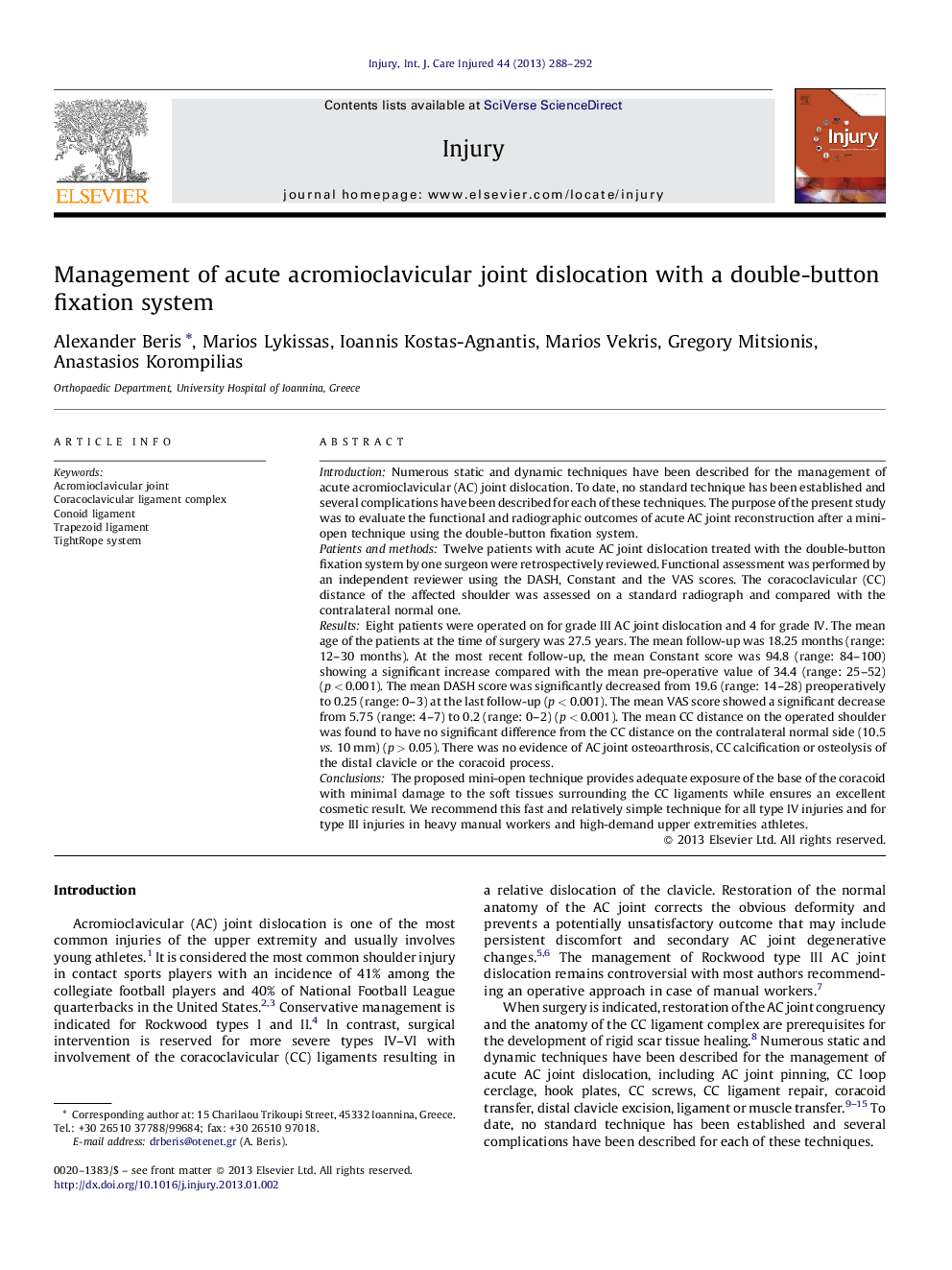| کد مقاله | کد نشریه | سال انتشار | مقاله انگلیسی | نسخه تمام متن |
|---|---|---|---|---|
| 3240720 | 1206052 | 2013 | 5 صفحه PDF | دانلود رایگان |

IntroductionNumerous static and dynamic techniques have been described for the management of acute acromioclavicular (AC) joint dislocation. To date, no standard technique has been established and several complications have been described for each of these techniques. The purpose of the present study was to evaluate the functional and radiographic outcomes of acute AC joint reconstruction after a mini-open technique using the double-button fixation system.Patients and methodsTwelve patients with acute AC joint dislocation treated with the double-button fixation system by one surgeon were retrospectively reviewed. Functional assessment was performed by an independent reviewer using the DASH, Constant and the VAS scores. The coracoclavicular (CC) distance of the affected shoulder was assessed on a standard radiograph and compared with the contralateral normal one.ResultsEight patients were operated on for grade III AC joint dislocation and 4 for grade IV. The mean age of the patients at the time of surgery was 27.5 years. The mean follow-up was 18.25 months (range: 12–30 months). At the most recent follow-up, the mean Constant score was 94.8 (range: 84–100) showing a significant increase compared with the mean pre-operative value of 34.4 (range: 25–52) (p < 0.001). The mean DASH score was significantly decreased from 19.6 (range: 14–28) preoperatively to 0.25 (range: 0–3) at the last follow-up (p < 0.001). The mean VAS score showed a significant decrease from 5.75 (range: 4–7) to 0.2 (range: 0–2) (p < 0.001). The mean CC distance on the operated shoulder was found to have no significant difference from the CC distance on the contralateral normal side (10.5 vs. 10 mm) (p > 0.05). There was no evidence of AC joint osteoarthrosis, CC calcification or osteolysis of the distal clavicle or the coracoid process.ConclusionsThe proposed mini-open technique provides adequate exposure of the base of the coracoid with minimal damage to the soft tissues surrounding the CC ligaments while ensures an excellent cosmetic result. We recommend this fast and relatively simple technique for all type IV injuries and for type III injuries in heavy manual workers and high-demand upper extremities athletes.
Journal: Injury - Volume 44, Issue 3, March 2013, Pages 288–292